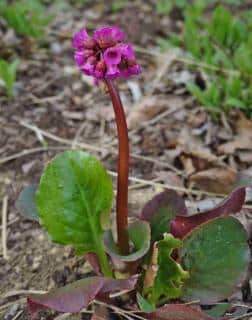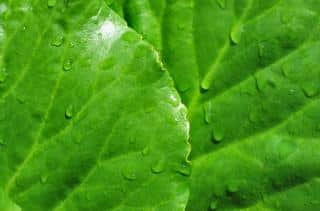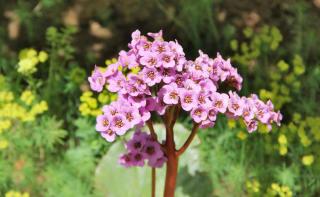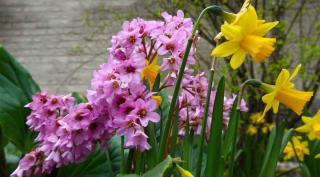

Bergenia bestows a very beautiful blooming come winter and its hardiness is extreme.
Basic Bergenia facts
Name – Bergenia
Family – Saxifragaceae
Type – perennial
Height – 12 to 16 inches (30 to 40 cm)
Exposure – full sun, part sun
Soil – ordinary
Flowering – December to April depending on the variety
A typical plant for rocky ground, edges, and flower beds.

It is also possible to plant in spring if you’re able to water regularly at the beginning.
A sun-endowed spot in winter is crucial for your bergenia to bloom. However, since it needs shade during summer, the ideal setting for it is to grow at the foot of deciduous trees.
Bergenia doesn’t fear the cold nor does it fear freezing, this actually makes the color of its leaves more intense.
Bergenia grows along a creeping rhizome, which makes it a plant that tends to nibble space up as years go by.


Bergenia is very resistant to most diseases.

This plant, also called the cobbler’s plant or elephant ears, forms amazing large, thick leaves and the cute flowers are clumped together to form a bunch.
With high levels of tannin compounds, the fact that cobblers used it to tan leather gave the plant its name of the “cobbler’s plant”.
This perennial is very hardy and requires virtually no care at all, while guaranteeing a very high appeal for your edges, rocky ground or mounds!